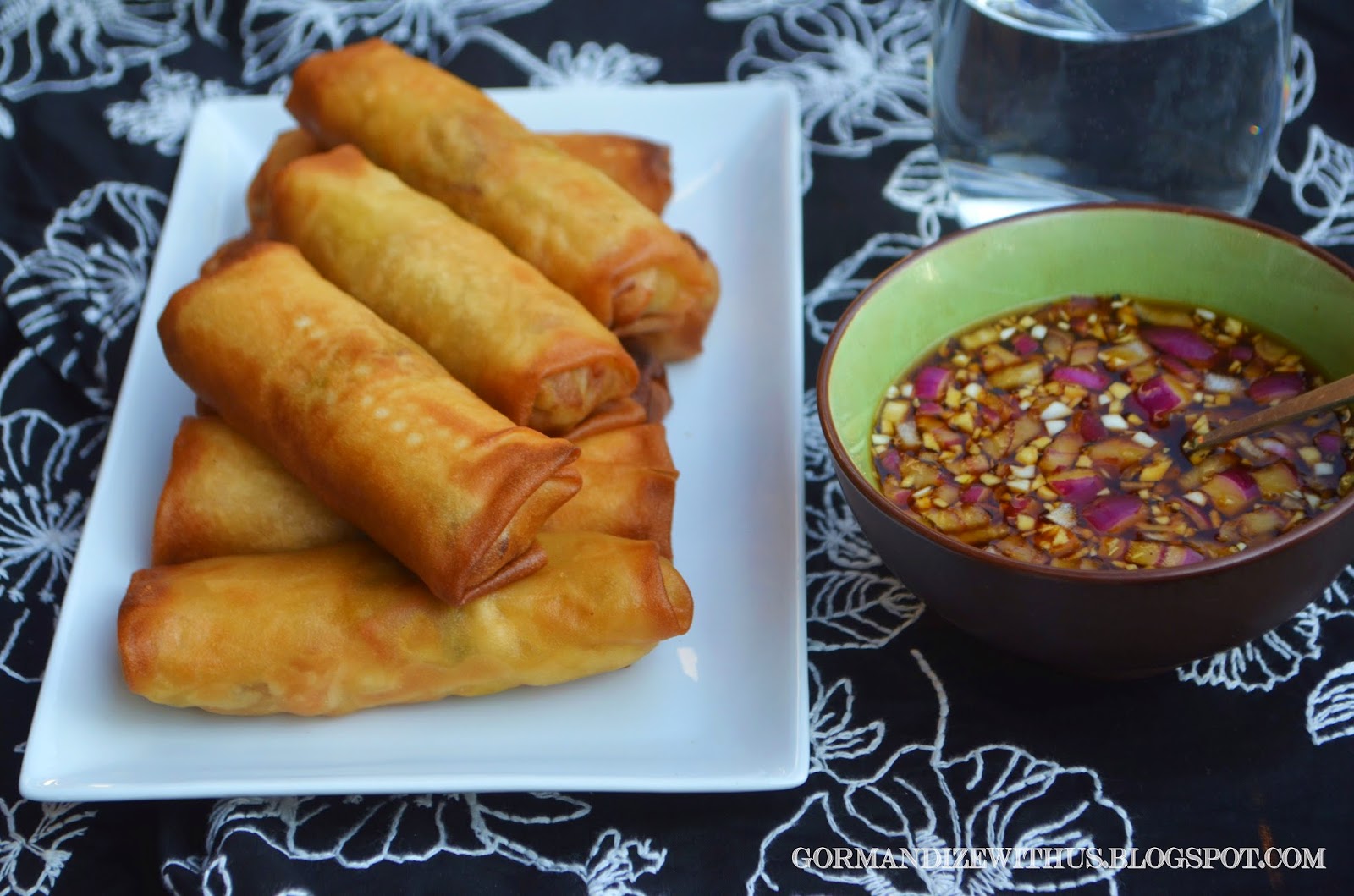You might have noticed a lot of lumpia on the blog this month - here is another! Lumpia are Filipino spring rolls and they come in all varieties. I've already shared fresh (lumpiang sariwa) and gorgeous fried (lumpiang prito) spring rolls, you can find links to those recipes at the bottom of this post. Lumpiang hubad is essentially the filling of the rolls and the sauce, but without wrapping them up into rolls. Same great flavours, but a 'lazy' version which doesn't involve taking the time to roll them. The peanut sauce all over it is just delicious.
I've chopped my veggies bigger than I did when making the lumpiang sariwa and prito, because I knew I wouldn't be rolling it up. You can also just make a double batch of lumpiang filling and use half for rolls and half with peanut sauce like this for another meal.
Ingredients
1 tbsp vegetable oil
1 onion, diced
5 garlic cloves, minced
400g hard tofu cut into cubes
1 cup sweet potato cut into cubes
1 large carrot, cubed
1 cup chopped celery
2 tsp vegan fish sauce
1 tbsp soy sauce
1 cup sliced green beans
1 cup cabbage
Shallots, for garnish
For the peanut sauce:
2 cups water
1/8 cup soy sauce
1/3 cup brown sugar
1/4 tsp salt
2/3 cup finely chopped peanuts
1 clove garlic, finely minced
2 tbsp cornstarch
To make:
1. Heat oil in a large frypan or wok and add the onion and garlic. Sauté until translucent and then add the tofu and sweet potato. Cook for about 3 minutes and then add the carrots, celery and cook for a further 2 minutes, stirring often.
2. Add the fish sauce and soy sauce. Once the carrot is tender, turn off the heat and stir through the green beans and cabbage. The residual heat will cook them just enough.
3. Set the filling aside to cool a little, it can be warm but not hot when you wrap up the rolls.
4. To make the sauce: Combine 1 1/2 cups water, soy sauce, brown sugar and salt in a saucepan over a medium heat. Bring to a boil and then lower to a simmer. Once all the sugar is dissolved add the peanuts and garlic and simmer for 3-4 minutes. In a cup, combine the remaining 1/2 cup water with the cornstarch and stir until smooth.
5. Stirring the sauce continually, add in the cornstarch. Stir continuously over a low heat until the mixture thickens up a bit. Remove from the heat.
7. Arrange lumping hubad in a bowl and pour the peanut sauce over the top. Garnish with chopped shallots.
This
month I'm featuring lots of delicious food the Philippines.
Check
out my other Filipino recipe posts:

























